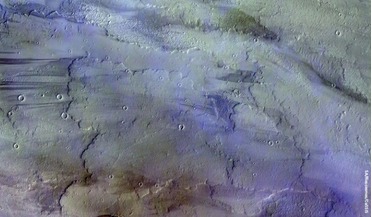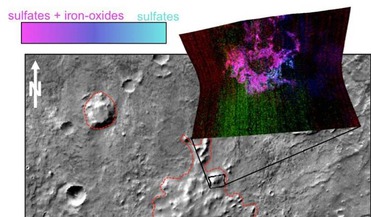 January 2018
When it comes to water Mars may not be the promised land
January 2018
When it comes to water Mars may not be the promised land
... estimate of 5 million cubic kilometres concentrated mainly in both polar caps - would not be enough to carve out the biggest canyon ... been detected on Mars and might be trapped in the polar caps along with CO2. If this is the case, then these ...
 December 2014
MAVEN and the evolution of Mars
December 2014
MAVEN and the evolution of Mars
... there was considerably more water than is currently detectable on either the surface (including in the polar ice caps) or in its atmosphere. The presence of early water is also linked to the possible development of early life as we know it, making...
 February 2018
Growth drivers, requirements and threats in the smallsat industry
February 2018
Growth drivers, requirements and threats in the smallsat industry
... companies are required to indemnify the government. In contrast, the UK’s Draft Spaceflight Bill only reserves the option to cap liability on a case-by-case basis when granting operator licences, instead of a fixed limit. The intention is to allow...
 04 May 2016
Martian minerals point to subglacial volcanoes
04 May 2016
Martian minerals point to subglacial volcanoes
... happen to a volcano buried under snow. About 1,000 miles (about 1,600 kilometers) from Mars’s southern ice cap are sites that have shapes consistent with volcanic eruptions beneath an ice sheet and although they...
 March 2016
Why We Need Space Artists
March 2016
Why We Need Space Artists
... can appear greenish, so it was natural to assume that there could be vegetation, growing and spreading as the pole cap melts in spring. Night launch of Discovery (Acrylics, 1995) a private commission Some astronomers, notably Percival Lowell, even...
 July 2016
Plasma Crystals - from space research to medicine on Earth and back to space again
July 2016
Plasma Crystals - from space research to medicine on Earth and back to space again
... of LN18 Glioblastoma cells - using TMZ and CAP. These cell lines are resistant against chemotherapy (Temozolomide... to the control (see column 2). Applying cold atmospheric plasma (CAP) for 60 seconds reduces the viability of the tumour cells (to...